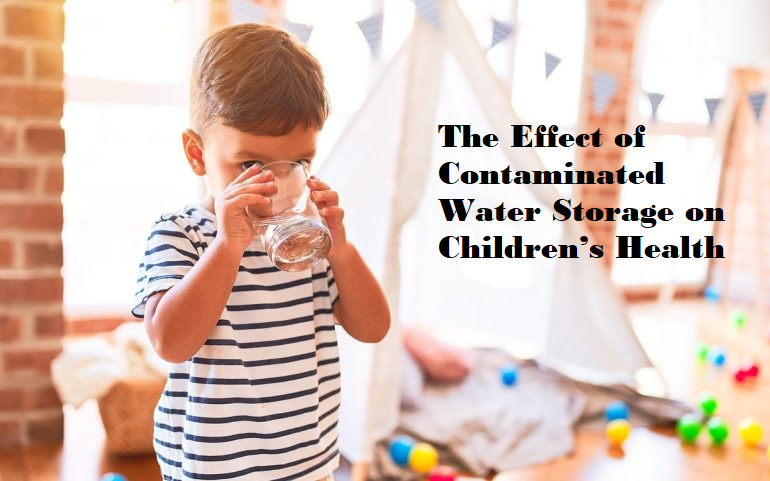
Water is an essential resource for human survival, yet its safety and quality often determine the level of health and well-being in communities. While access to safe water is a fundamental need, improperly stored or contaminated water can become a breeding ground for harmful pathogens. This issue is particularly alarming when it comes to children, who are more vulnerable to the health risks posed by contaminated water storage.
Understanding Contaminated Water Storage
Water storage systems, whether in homes, schools, or public facilities, are meant to ensure an uninterrupted supply of water. However, if these systems are not adequately maintained, they can become contaminated by a variety of sources:
- Microbial Contamination: Bacteria, viruses, and parasites can thrive in poorly cleaned or unsealed water storage tanks.
- Chemical Pollution: Leaching from materials, industrial pollutants, or the use of unsafe cleaning agents can taint stored water.
- Environmental Contaminants: Dust, debris, and insects can enter improperly sealed tanks, further deteriorating water quality.
Contaminated water may still appear clean to the naked eye, making it challenging to detect without regular inspection and testing.
Effects on Children’s Health
Children are particularly susceptible to the adverse effects of consuming contaminated water due to their underdeveloped immune systems and smaller body mass. The following are some of the most common health consequences:
1. Gastrointestinal Infections: Microbial pathogens such as E. coli, Salmonella, and Giardia can cause severe diarrhea, vomiting, and dehydration in children. Repeated infections can result in malnutrition and stunted growth.
2. Chronic Illnesses: Long-term exposure to contaminated water containing heavy metals, such as lead or mercury, can impair cognitive development, damage organs, and cause behavioral issues in children.
3. Skin and Eye Infections: Contact with contaminated water during bathing or washing can lead to skin irritations, rashes, and infections. Harmful microbes can also cause conjunctivitis or other eye problems.
4. Weakened Immunity: Frequent exposure to harmful pathogens can weaken a child’s immune system, leaving them more prone to other illnesses.
5. Mortality: In severe cases, waterborne diseases such as cholera or typhoid can become life-threatening, particularly in areas with limited access to medical care.
Preventing Contamination in Water Storage
Addressing the issue of contaminated water storage is critical for safeguarding children’s health. Here are some practical solutions:
1. Regular Cleaning and Maintenance:
Periodically clean water storage tanks and reservoirs to eliminate biofilms, sediments, and microbial growth.
Use safe and approved cleaning agents to avoid chemical contamination.
2. Proper Sealing and Filtration:
Ensure storage tanks are tightly sealed to prevent the entry of dust, insects, or animals.
Install filtration systems to remove impurities before water enters the storage system.
3. Monitoring Water Quality:
Conduct routine water testing to detect contaminants and ensure that the water meets safety standards.
Educate communities about the importance of water quality monitoring.
4. Safe Water Usage:
Boil or treat stored water before consumption, especially for children.
Encourage the use of chlorine tablets or UV sterilizers for additional disinfection.
5. Education and Awareness:
Teach families, schools, and caregivers about proper water storage practices and the health risks of contaminated water.
Advocate for policy changes that ensure access to clean water and improved infrastructure for water storage.
Conclusion
The safety of water storage directly impacts the health and development of children. Contaminated water not only poses immediate health risks but also threatens long-term well-being, particularly for the most vulnerable members of society. By prioritizing regular maintenance of storage systems, promoting safe water practices, and spreading awareness, communities can protect children from the dangers of contaminated water and ensure they grow up healthy and thriving. Access to clean water is not just a basic necessity; it is a fundamental right that every child deserves.


